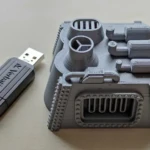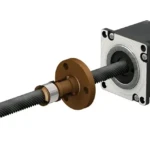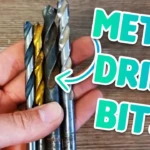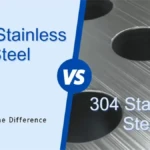Mastering Precision: The Ultimate Guide to TANGENT DEBURLANT Rotary Files
What Exactly Is a TANGENT DEBURLANT Rotary File?
TANGENT DEBURLANT rotary files, commonly known as carbide burrs, are engineered to revolutionize precision material removal. Unlike conventional tools, these high-speed rotating instruments integrate tungsten carbide cutting edges optimized for ultrafine deburring, edge refinement, and profile shaping. Designed for high-RPM operations up to 35,000 RPM on pencil grinders or CNC machining centers, they transform rough-edged components into flawless finishes while extending tool longevity—ideal for aerospace, automotive, and precision manufacturing.
The Science Behind the Material: Why Carbide Reigns Supreme
Microcrystalline carbide construction forms the core technology. Unlike standard burrs:
- They blend tungsten carbide particles with a cobalt binder, creating extreme hardness (Rockwell A 92+) for abrasion resistance at high temperatures
- Microcrystalline structure combats thermal cracking and fragmentation
- Engineered coatings like AlTiN or TiCN reduce friction and extend tool life by up to 40% in heat-resistant alloys
- Available in 100% carbide or steel shank hybrids with carbide heads for flexibility
Material Compatibility Matrix
| These tools outperform competitors across diverse materials: | Material Type | Recommended Burr Characteristics |
|---|---|---|
| Stainless Steel/Titanium | Diamond-cut geometry + AlTiN coating | |
| Aluminum/Copper Alloys | Single-cut flutes with anti-load edges | |
| Plastics/Composites | Polished surfaces + sharp rake angles | |
| Tool Steels (32+ HRC) | Microcrystalline carbide + heat dispersion coatings |
Innovation Spotlight: Type-Specific Engineering Advantages
-
AL-CUT Series
- Anti-chip-loading design: Deep flute clearance prevents aluminum adhesion
- Mirror-polished surfaces eliminate material buildup
- Zero-point grinding for burr-free edges on soft alloys
-
STAINLESS STEEL-CUT Series
- Heat-diffusing channels reduce thermal stress
- Optimized helix angles decrease work hardening risk
- Outperforms conventional burrs at feed rates over 35%
- X-CUT Hybrid Geometry
- Combines double-cut rigidity with single-cut chip evacuation
- Variable flute spacing disrupts harmonic vibration
- Minimizes chatter in thin-walled components
Geometric Mastery: Shape-Function Analysis
| Shape Code | Profile | Primary Applications |
|---|---|---|
| A/ZYA/FIS | Cylindrical (no end cut) | Surface flattening, weld seam leveling |
| D/KUD/SD | Spherical ball | Mold contouring, concave cavities |
| E/TRE/SE | Oval (olive) | Tight-radius edges, gear teeth deburring |
| K/KSK/SK | 60°/90° cone | Countersinking, chamfering, precision V-grooves |
| L/KEL/SL | Tapered ball | Deep internal features, turbine blade finishing |
Innovative Performer: G/SPG/SG Tree-Ball profiles reach into gear root diameters impossible for standard tools, reducing secondary operations by 60%.
Strategic Application Techniques
- RPM Optimization: For aluminum, utilize 15,000–25,000 RPM; stainless requires 8,000–12,000 RPM to prevent work hardening
- Contact Protocols: Maintain <2mm tool engagement for chip thinning and enhanced control
- Coolant Strategy: Air blast prevents thermal shock while clearing chips in blind holes
- Directionality Rules: Single-cut burrs must rotate toward cutting edge to avoid fracture
Why Coated Burrs Deliver Unmatched ROI
- AlTiN-Coated Burrs: Elevate resistance to oxidation at 1,000°C for Inconel machining
- Diamond-Like Carbon (DLC): Adds hydrophobic surfaces to prevent gummy material adhesion
- UltraLife Technology: Third-generation gradient coatings boost mean time between failure by 70% in abrasive composites
Real-World Innovation: The VSX Profile Control System
Next-gen TANGENT designs feature:
- Variable Shear Geometry: Zones alternated between cutting and polishing for simultaneous roughing/finishing
- Cryo-Treated Shanks: Eliminate vibration transmission
- Chip Splitters: Mechanically segmented flutes redirect swarf away from critical surfaces
Closing Insight
TANGENT DEBURLANT rotary files redefine precision metalworking beyond deburring—they’re material-specific shaping solutions merging microcrystalline carbide physics with geometric intelligence. From textured patterns on medical implants to aerodynamic contours in motorsports, these tools create structural integrity at microscopic levels. For your next critical surfacing project, the strategic edge isn’t an option—it’s embedded in the flutes.

















